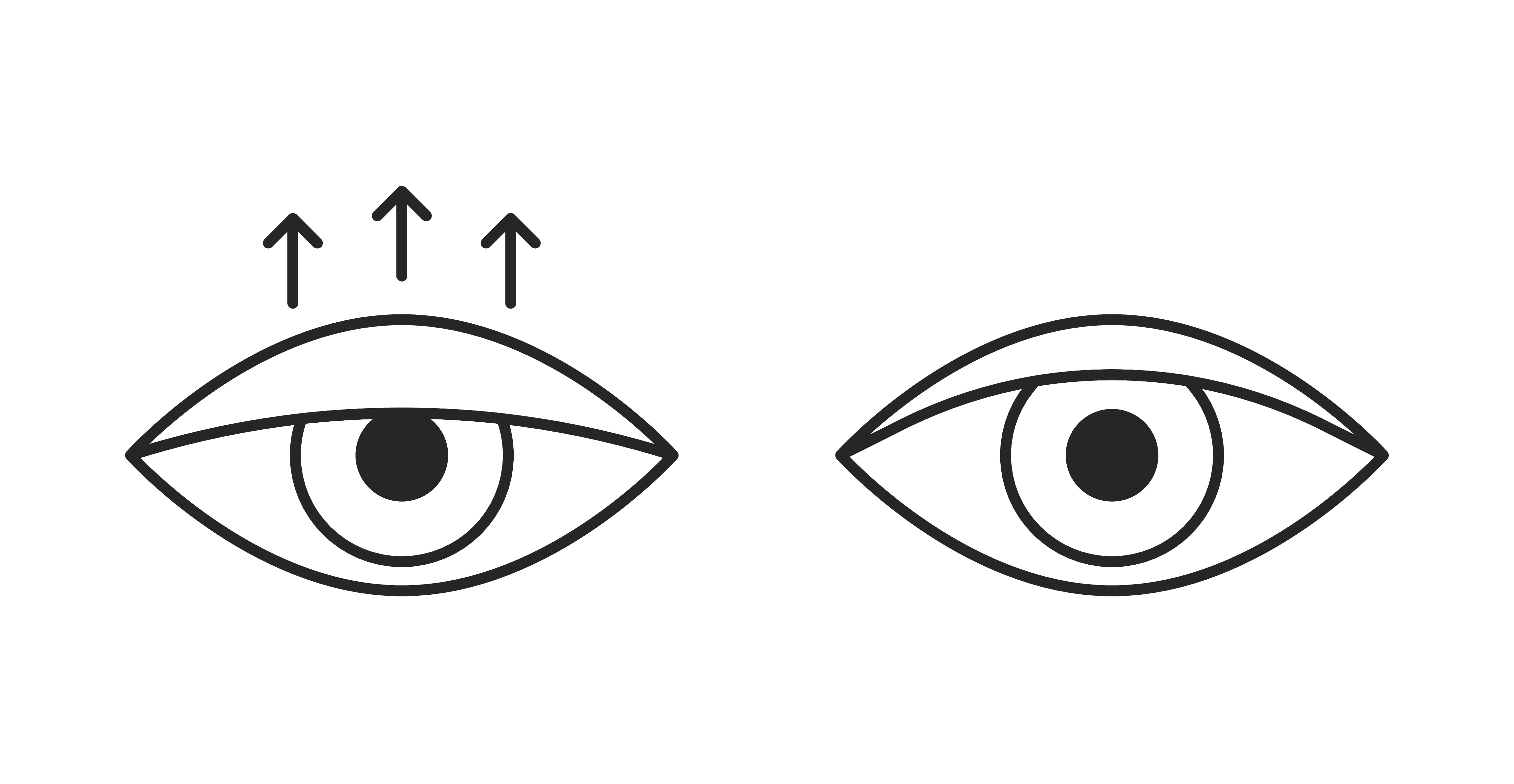What is ptosis surgery
Ptosis is the medical name for drooping of the eyelids. Ptosis surgery aims to lift the eyelids. This can help to improve your field of vision and relieve heaviness around your eyelids.
What causes ptosis of the eyelid?
The most common cause of a droopy eyelid weakness of the Levator Palpabrae Superioris (LPS) muscle. The LPS can become loose with age, chronic rubbing and due to genetic factors. Other causes of eyelid ptosis can be:
- Ptosis from birth
- Ptosis due to nerve or muscle problems
- Ptosis due to the eyelid being physically pushed down (mechanical ptosis)
The Levator muscle is tightened in ptosis surgery to elevate the eyelid
What is involved in ptosis surgery?
Your surgeon would have determined your suitability for ptosis surgery in your consultation. Ptosis surgery is complex and can only take place in a day surgery. Step by step the procedure involves:
- Your surgeon will place marks over the eyelid skin pre-operatively
- You will be sedated and then have anaesthetic injections to both of your upper eyelids.
- The surgery itself takes about 90 minutes. The skin will be closed with removable sutures. During your surgery, your surgeon will ask you to open your eyes and look in various directions.
This is because the eyelid height and contour is determined during the operation.
This will not be painful. Due to the sedation, some people do not remember this part of the operation. - You will have ice packs applied to your eyelids as you recover, in the hour after surgery.
- On discharge you should
- Apply ice packs to your eyelids for 15 minutes every hour for the first 48 hours
- Apply Chlorsig ointment to the wounds four times a day until review
- Sleep with your head elevated on at least 2 pillows for 2 nights.
- You will be asked to come in for suture removal between 7-10 days after your surgery.
Are there any restrictions to what I can do after surgery?
- Bruising and swelling is a normal part of the recovery process. This will reduce significantly but can remain for several weeks after.
- We encourage you not to do aerobic activity or weight lifting for 2 weeks after surgery.
- You may not swim with your head submerged for 2 weeks after surgery.
- You should not wear makeup for 2 weeks after surgery.
- You may fly, however we encourage that you do not travel in the 2 weeks after surgery in case of infection or other post- operative complications.
What are the problems that can happen with ptosis surgery?
Every surgery has risks. The problems related to ptosis can be:
- Bruising and swelling of the eyelids (very common)
- Dry eye (common)
- Scar (definite)
- The scar will be hidden in the eyelid crease. There may be some scar that extends beyond the eyelid crease. This can be managed with scar reducing creams. Abnormal scarring, however rare, is always a possibility.
- Infection (rare)
- Further surgery (10%)
- This may be due to the eyelids being too high or too low, a poor eyelid contour or uncontrolled bleeding
- Injury to the eye (extremely rare)

